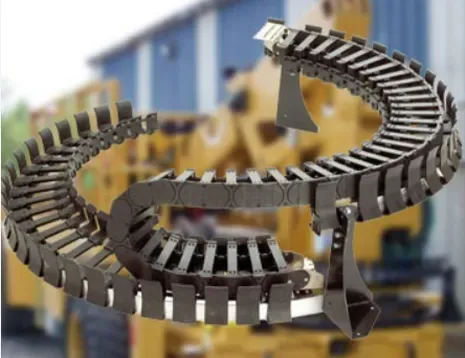cable drag chain
Understanding Cable Drag Chains An Essential Component in Modern Machinery
In the realm of modern machinery and automation, the functionality and efficiency of systems heavily rely on their components. One such critical component is the cable drag chain, commonly referred to as a cable carrier or energy chain. These structures play a vital role in the organization, protection, and management of cables and hoses in moving environments.
What is a Cable Drag Chain?
A cable drag chain is an assembly that serves as a conduit for multiple cables or hoses. It consists of a series of interconnected links that create a flexible yet sturdy pathway through which electrical cables, hydraulic hoses, and other conduits can travel. Typically made from durable materials like plastic, steel, or aluminum, these chains are designed to withstand the rigors of repetitive motion, ensuring that essential connections are maintained without wear or damage.
Functionality and Benefits
The primary purpose of cable drag chains is to keep cables organized and protected during movement, particularly in applications where machinery operates in a repetitively dynamic manner. For instance, in CNC machines, robotic arms, and conveyor systems, these chains facilitate the seamless movement of wires and hoses, preventing tangling, abrasion, and potential failure.
By containing and managing these conduits, cable drag chains offer numerous benefits
1. Reduced Wear and Tear By guiding cables through a defined path, drag chains minimize friction and potential damage that could lead to costly breakdowns or downtime. 2. Improved Safety A well-organized cable system reduces the risk of tripping hazards and electrical shorts caused by exposed or unmanaged wires.
cable drag chain

3. Extended Lifespan When cables and hoses are housed within protective drag chains, their lifespan can significantly increase due to reduced exposure to environmental factors and mechanical stress.
4. Enhanced Aesthetics Beyond functionality, cable drag chains contribute to a cleaner and more organized appearance in workspaces by eliminating clutter and disorganization.
Applications of Cable Drag Chains
Cable drag chains find applications across a diverse range of industries. They are widely utilized in the automotive sector, where robotic arms and automated machinery necessitate precise cable management. In the manufacturing realm, equipment like conveyor belts and packaging machines rely on drag chains to keep cables tidy and accessible. Furthermore, in the field of entertainment, these chains support lighting and sound equipment in theaters and concert venues, ensuring that cables are efficiently routed while allowing for artistic flexibility in staging.
Choosing the Right Cable Drag Chain
When selecting a cable drag chain for a specific application, several factors must be considered. The type and size of the cables to be housed, the environment in which the chain will operate (including temperature, humidity, and exposure to chemicals), and the required flexibility and movement range are all critical elements in making an informed choice. Additionally, the material of the drag chain plays a significant role in determining its durability and performance.
Conclusion
In conclusion, cable drag chains are indispensable components of modern mechanical and automation systems. They provide essential cable management and protection, contributing to the operational efficiency and safety of various applications. As technology continues to evolve, the design and capabilities of cable drag chains will likely advance, further enhancing their effectiveness in an increasingly automated world. Understanding their importance allows industries to mitigate equipment failure risks and improve the overall functionality of their systems.








